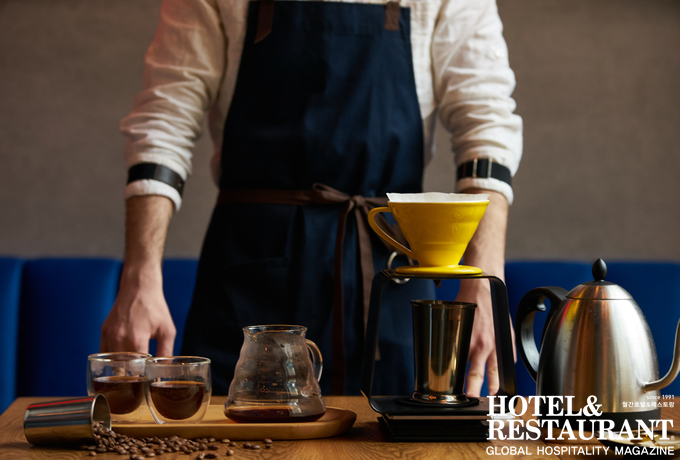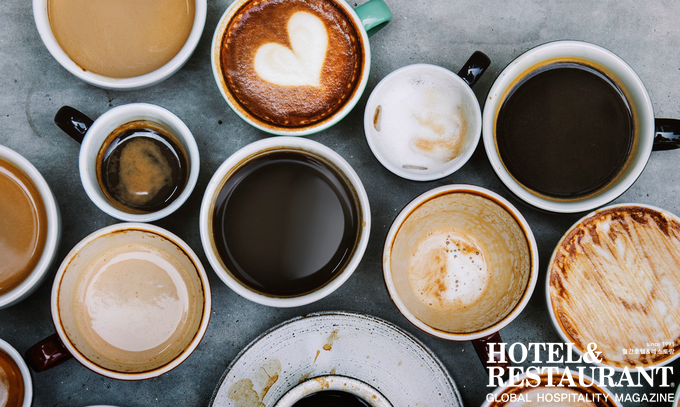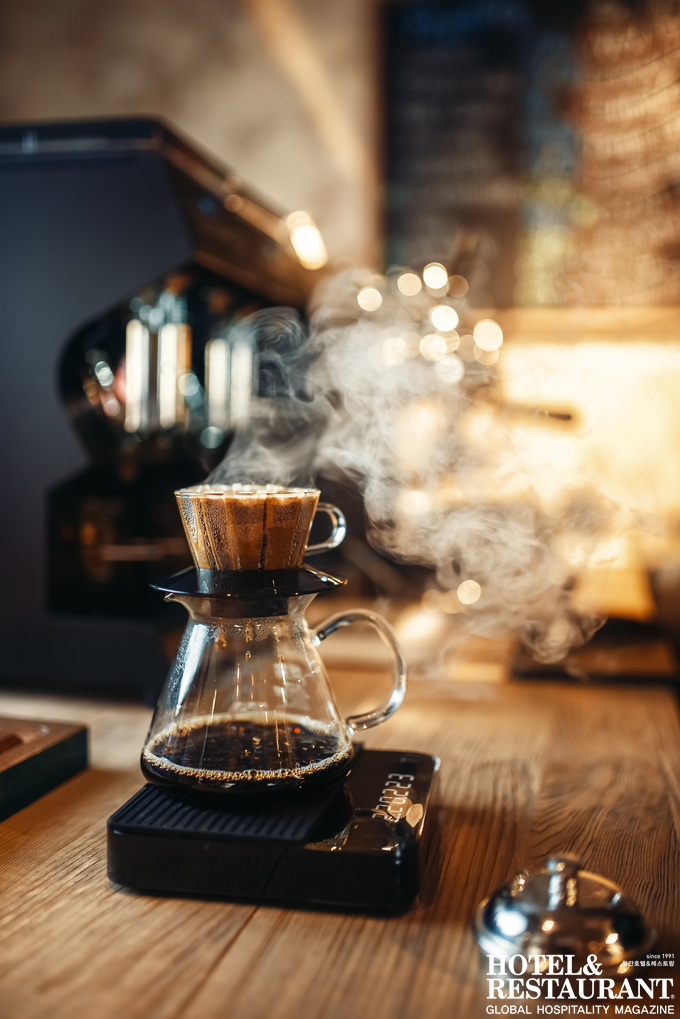
“큰 카테고리 안에 속하라; 이상적인 카테고리는 많은 이들에게 소비되고 한계효용의 실질적인 제한이 없는 것이다; 가격 탄력성은 불명확하다; 더 새롭고 보다 나은 브랜딩과 더 새롭고 보다 나은 자산을 가져라. 끊임없이 정비하고 반복하라. 고객들이 소비하는 브랜드로 그들을 표현할 수 있다면 더 할 나위 없이 좋을 것이다. 커피의 세계에 온 것을 환영한다.”
- 미국 프랜차이즈 금융업계에 종사하고 있는 오랜 지인으로부터 받은 조언.
Inc. Magazine에 따르면 미국의 벤처 캐피탈 회사는 미국에서만 커피 창업 기업에 무려 10억 달러 이상을 쏟아 부었다고 한다.
25년 전, 커피는 성장률이 미미한 지루한 카테고리에 속했다. 스타벅스가 커피산업에서 중요한 한 부분을 차지하기 시작했지만 여전히 대부분의 미국인들은 마트에서 맥스웰 하우스나 유반을 찾고, 외식할 때에도 비슷한 품질 수준의 커피에 만족했다. 물론 스타벅스가 미국인의 식탁(음식과는 별개의 문제다)에 더 양질의 커피를 올릴 수 있도록 그들의 입맛을 바꿔 놓았다는 것에 이견을 가지는 이는 없을 것이다. 하지만 여기서 한 가지 문제가 있었다. 속된말로 속물들이 으스대기에 너무 크고 지루한 체인이 돼버린 스타벅스를 대신해 독립적인 고품질의 스페셜티 커피숍이 생겨나기 시작한 것이다.
미국에서의 커피소비는 다시 늘어나고 있다. 2016년에는 미국인의 57%가 하루에 1잔 이상의 커피를 소비하고 있었고 이 수치는 2년 뒤인 2018년에는 64%로 높아졌다.
인도 커피 시장의 경우에는 특별히 Blue Bottle, Intelligentsia, & Stumptown 등과 같은 탄탄한 브랜드들이 성장하고 있으며, 큰 레스토랑 조직에 인수되고 있다. 소문에 의하면 네슬레의 경우에는 많은 팔로워들을 보유한 체인 Blue Bottle 지분의 대주주로 무려 4억 5000만 달러를 지불했다고 한다.
현재 미국의 커피 시장은 129억 달러로 추산되며, 아무리 스타벅스라도 지배적인 부분을 차지하고 있지 않다. 새로운 스타트업들에 의해 커피시장이 분열될 기회는 충분히 존재하며 최근에 대두되고 있는 트렌드들은 하향식이 아닌 상향식으로 이뤄지고 있다. 콜드브루는 힙스터들의 음료가 됐고, 특히 스타벅스와 슈퍼마켓 음료 공급자들에 의해 크게 성장하고 있다. 최근 뜨고 있는 스타트업 Rise Brewing도 RTD 콜드브루를 판매하고 있는데 음료에 질소를 첨가해 에너지를 높이고 있는 것으로 알고 있다. 앞으로 냉장 RTD 커피와 티 시장 규모는 2015년 기준 710억 달러에서 2024년 기준 1160억 달러로 늘어날 것이라 예상되고 있다.
예상가능하지만 고급 커피의 열풍은 밀레니얼 세대들 사이에서 가장 극심하게 나타난다. 밀레니얼 세대 중 48%의 소비자들이 고퀄리티의 커피를 매일 즐기고 있다. Blue Bottle이 유명한 예멘커피 Port of Mokha를 한잔에 16달러에 팔고 있는 것을 보면 얼마나 스페셜티 커피에 대한 열망이 뛰어난지를 알 수 있다.
스타트업 커피숍의 성공을 위한 비밀 공식은 무엇일까?
먼저 가격! 커피 가격은 비쌀수록 좋다. 커피 시장에서 가격 탄력성은 저소득층을 제외하면 크게 영향을 미치지 않는다. 두 번째, 특정 음료에 대해 다양한 플레이버 포트폴리오가 중요하다. 요즘의 스타트업들은 모두 그들만의 특별한 전략을 가지고 있다. 특히 소비자들은 와인이나 버번과 같이 커피에 대해서도 새로운 블렌딩 시도에 대한 끊임없는 호기심을 가지고 있다. 세 번째, 경험이다. 고객들은 그들의 커피가 자신만을 위해 준비되고 블렌딩되기를 원한다. Pour over와 Siphon 방식으로 커피를 내리는 것이 최근 가장 큰 화두다. 두 방식은 40년 전 일본에서는 이미 활발하게 이뤄지고 있었다. 나는 일본에서 대학교를 다니고 있었고 ‘Kissaten(일본어로 커피 전문점)’에 자주 방문했었는데, 당시 커피 가격은 약 300엔(약 1.5달러)에 커피를 즐길 수 있었고 몇 시간이고 물을 리필해가며 과제를 했던 기억이 난다. 유럽에서부터 일본, 타이완, 한국과 중국까지 번진 오래된 커피 문화가 이제는 미국에서 부활하고 있다. 역시 유행은 돌고 도나보다!
전통 커피 시장의 전성기가 올 것인가? 아마 전문에서 필자의 오랜 지인이 했던 이야기를 빌어보면 조만간은 아닐 것이라고 생각한다. 많은 사람들이 커피를 마시고 새로운 블렌드와 브루잉 기술에 대한 관심을 가지고 있다. 이 같은 상황으로 보면 대부분의 소비자 상품 구매와 비교했을 때 한계 효용은 없어 보인다. 밀레니얼 세대들에게 가격은 큰 문제가 아니다. 그들에게 있어 커피에 대한 수요는 비탄력적이다. 더 비싼 것이 더 좋다. 심지어 Tiffany 조차도 NYC의 주력 상점에 Blue Box Cafe를 운영하고 있다. 특히 패키지, 매장 디자인을 포함한 브랜드 인지도가 계속해서 높아지고 있다. 밀레니얼들은 확실히 자신들을 드러내 줄 수 있는 상품과 특정한 커피에 대한 니즈가 강하다.
아마도 당분간 커피에 대한 열기는 오래도록 식지 않을 것으로 보인다!

ARE COFFEE SHOPS A BUBBLE?
“Go into a huge category; ideally a category where there is high incidence and no real cap on marginal utility; price sensitivity is fuzzy; have better/newer branding and better newer assets. Rinse and repeat. Even better when people define themselves by the brand they consume. Welcome to coffee.” -Comment from a long-term friend in the USA franchise finance industry.
According to Inc. Magazine, American venture capital firms are pouring over $1 Billion into coffee start-ups just in the USA.
Twenty-five years ago, coffee was a boring category with little growth. Starbucks was beginning to be a factor but most Americans were content to buy Maxwell House or Yuban at the supermarket and drink similar quality coffee beverages when dining out. While Starbucks certainly deserves credit for educating the American palate to accept better quality coffee beverages (their food is another matter), there was an unintended outcome – the rise of independent high-quality specialty coffee shops for those snobs that felt Starbucks was just too big & boring a chain to patronize any more.
Coffee consumption is again rising in the USA. In 2016 57% of Americans drank 1 or more cups per day. That number is 64% two years later.
The Indie coffee industry is especially robust with brands like Blue Bottle, Intelligentsia, & Stumptown, etc., all being acquired by large foodservice organizations. Nestle reportedly paid $450 million for a majority stake in Blue Bottle, a small West Coast based chain with a cult following.
The USA coffee market is estimated at $12.9 Billion and no player has anywhere near a dominant position, not even Starbucks. There is clearly more opportunity for disruption by new startups. It is noticeable as of late that most trends start from the bottom up not from top down. Cold Brew began as a drink for hipsters and now is a large fast-growing business thanks to Starbucks and many supermarket beverage suppliers. Rise Brewing, a new startup, has a ready to drink cold brew infused with nitrogen to increase energy supposedly. The total refrigerated ready to drink coffee and tea market is expected to grow to $116 Billion by 2024 vs, $71 Billion (2015).
As you can imagine, this gourmet coffee craze is particularly acute with millennials. 48% of them drink a high-end coffee beverage every day! Blue Bottle sells a Port of Mokhu coffee from Yemen for $16 a cup!

What is the secret formula for the success of Startups?
First is price! It seems the more expensive the coffee the better. There is limited to no price elasticity in this business except perhaps for lower income customers. Second is the flavor profiles of the particular beverages. Every one of these startups has a new gimmick to offer. Consumers have an insatiable curiosity to try new blends. Coffee is becoming like wine or bourbon. Third is the experience. Customers want their coffee blended and prepared just for them. Pour over and siphons are the big deal now. They were also big more than 40 years ago in Japan when I was a frequent visitor to the neighborhood Kissaten (Japanese for coffee shop) as a college student. I usually bought a cup of coffee for 300Yen (about $1.50 in those days) and then sat there doing my homework for several hours with constant requests for refills of water. It seems that the old coffee culture that traveled from Europe to Japan, Taiwan, Korea &China, has now has settled down in the USA for another revival. The old ways become the new!
Is there any peak coming to the artisanal coffee market? Probably not anytime soon, for the key reasons advanced by my finance friend at the beginning of this article. Most people drink coffee and are curious about trying new blends and brewing techniques. There apparently is no marginal utility compared to buying most consumer products. Price is not an issue for millennials apparently. It seems that demand is inelastic for this group. The more expensive the better. Even Tiffany has a Blue Box Café now in their flagship store in NYC. Branding is always improving, especially packaging and store designs. Millennials really care about the product and few the coffee they drink as a statement about themselves – somewhat similar to personal care products. Hermes perfume anyone?
It seems that the love affair with coffee will continue for a while for sure!
Joel Silverstein
이스트웨스트 호스피탤리티 그룹 대표
현재 홍콩에 거주하며 최고 경영진과 포춘 Fortune 500대 기업이 다수 아시아 국가에서 지속 가능한 성장을 할 수 있게 도와주고 있다.
- 2024.11.05(화)~2024.11.11(월) 투어리즘&마이스 서울특별시관광협회, 제27대 협회장 후보자 등록 실시
- 2024.10.25(금)~2024.11.07(목) 대회·공모전 "서울 관광산업 발전에 기여한 자를 찾습니다."…서울특별시관광협회(STA), 2024 서울관광대상 수상 후보자 모집
- 2024.10.18(금)~2024.10.19(토) 축제 한국관광공사, 원주 시민과 함께하는 ‘세계로(路) 페스타’개최
- 2024.10.13(일)~2024.10.20(일) 축제 하슬라국제예술제 오는 13일 개막… 공연장으로 탈바꿈한 강릉 정체성 담긴 장소들
- 2024.10.5(토)~2024.11.3(일) 축제 대한민국 대표 공연관광 축제 ‘2024 웰컴대학로’ 개최
- [Joel의 Global Dining Market] 로보틱스, 자동화의 시대가 도래하다 2021-06-15
- [Joel의 Global Dining Market] 가상공간의 외식 브랜드 시장 속에 실재할 수 있을까? 2021-04-05
- [Joel의 Global Dining Market] 뉴노멀에 적응하는 식당가들의 새로운 전략_ 배달음식 전문점 2020-11-12
- [Joel의 Global Dining Market] 해외 진출의 관문? 홍콩 시장의 인기_ 외식업계 위기와 변화 면밀히 살펴봐야 2020-09-20
- [Joel의 Global Dining Market] 코로나19의 여파, 미국 외식 산업의 위기_ 더 좋은 음식과 더 나은 서비스로 고객 공략해야 2020-08-03
- [Joel의 Global Dining Market] 코로나19로 기세 오른 플랫폼 비즈니스_ 레스토랑과 상생하는 모델 모색해야 2020-06-02
- [Joel의 Global Dining Market] 아픈 손가락의 성장 필리핀 2020-04-20
-

워커힐 호텔앤리조트, 특별한 연말연시 위한 패키지 3종 제안
- 2024-11-18
- 안수진 기자
-

삼시세끼 호텔식에 패밀리 프로그램까지… 삼대 여행 패키지도 ‘올 인클루시브’
- 2024-11-18
- 안수진 기자
-

르메르디앙 서울 명동의 ‘라팔레트 파리’, 여유로운 호사를 느낄 수 있는 프렌치 스타일의 <위켄드 버블 브런치> 뷔페 선봬
- 2024-11-18
- 안수진 기자
-

파크 하얏트 서울의 더 팀버 하우스, ‘맥캘란 200주년 기념 타임 트래블 프로모션’ 선봬
- 2024-11-18
- 안수진 기자
-

임피리얼 팰리스 서울, ‘그랜드 머큐어 임피리얼 팰리스 서울 강남’으로 새출발
- 2024-11-18
- 안수진 기자
-

[Zoom In] MZ세대와 호텔 비대면 서비스의 미래
- 2024-11-18
- 안수진 기자






























